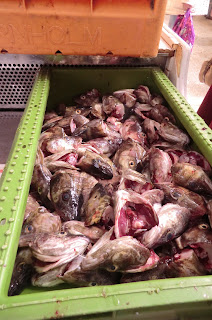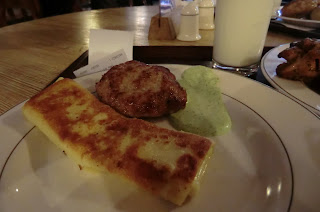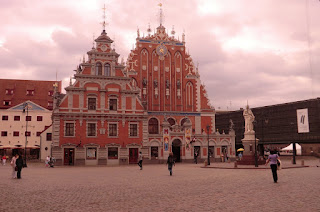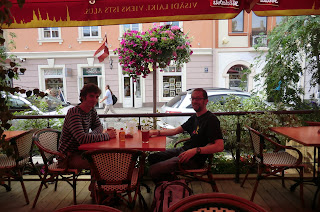Riga seems like the least prosperous of the Baltic countries. There are less English speakers. Tourism doesn’t seem so developed. The old town is quite well preserved and has some amazing and beautiful buildings and architecture.
I get the sense that anyone over the age of 50 living in Riga has probably seen a lot in their life when compared to the average American. And if you are nearing WWII age, damn, talk about having seen hardship. Before WWI Riga was controlled at various times by the Poles, Germans, and Swedes (who seemed to have quite the empire a few hundred years ago). In WWI, Latvia lost 60% of it’s population. During WWII the Germans occupied Latvia and exterminated nearly all the Jews. Latvia first declared it’s independence in the 30s, but then was occupied continuously by either the Germans or Soviets until the fall of the Soviet Union, reclaiming independence in 1991. Under Soviet rule after WWII, the country was supposedly the 3rd most important city of the Union economically. However, the Soviet’s essentially imported tens or even hundreds of thousands of Russian workers into Latvia to undermine the Latvian culture. Even today, according to my friend Karlis (a classmate in my program from Riga), at least 30% of the population speaks Russian and probably most people of a generation older than mine will speak some Russian. If he wanted to, learning Russian well would not be a problem. One amazing fact that Karlis told me, was the Soviet’s built tram tracks around the central Latvian freedom monument (originally erected after the 1st independence), in order to downplay its significance during their occupation. These were removed after 1991.
Freedom Monument:

Nowadays more people are leaving Latvia than coming. In their census last year, a large percentage of people were undocumented because they had left. Karlis said he had the impression that Latvia was 2.4 million people but he just checked the other day and was really surprised now that it is only 1.8 or so. Of course they did have some good economic times during the 90s and early 2000s, but as Karlis said it was probably with money that didn’t really exist, and now there are plenty of empty buildings on the outside of Riga. Coming into Riga by bus also is interesting. You really see the Soviet influence through all the monolithic rectangular apartment houses lining the streets. If Karlis wants to do something specific with fire in Riga when he graduates, it probably is not really possible. Instead he is thinking he may need to work in Sweden for some time, acquire some skill, come back, and then have the chance to change the government infrastructure in relation to fire safety. Most likely he will be the only person in the country with this degree.
Aside from the history stuff, I quite liked Riga. It really seems like it has a lot to offer but there just are not enough resources to exploit these things. And the people are quite proud of their little country. Buildings, outside the old town, but not farther out where the block buildings start were also really impressive and intricately designed. Things were also really cheap. Cheaper than Estonia and cheaper than Lithuania. Say, 2 bucks for a pint of nice beer. It is also only about 10 km away from some nice beaches and the rest of the country seemed pretty green and beautiful, albeit very flat.
Now, they also have the most massive market I have ever been to. This thing was four airplane hangers that used to be for Zeppelins, plus all the outside area in between the hangers. One hanger was for vegetables, one for fish, one for meat, and one for cheese, breads, and desserts. Outside you could find clothes and pretty much any knick knacks you could imagine. I stumbled upon a woman selling mysterious potion like bottles and had to investigate Apparently they are just oils with some local Latvian herbs and spices. I bought one that is orange and you take a teaspoon a day for good health, haha! It tastes like someone put food coloring in some Crisco. Drinking straight oil just isn’t that appetizing.
Mysterious medicinal oil with Latvian herbs:

Bin of fish heads:

The meat hanger:

Also even outside the old town, it was common to see a lot of buildings just falling apart. Plenty of abandoned buildings, buildings without roofs or boarded up, or some with paint coming off, chunks of the wall missing, or wires exposed. The kind of stuff I suppose kind of had in my imagination about what things in Eastern Europe might look like, from movies. Ironically, some movies are set in Riga when they want to make a movie in Russia and they won’t let them, haha.
Kvass, a soda like fermented drinks with .5% alcohol. Typical of Russia, Baltics, Belarus, etc.


Trying kefir, a popular soured yogurt/milk drink that I probably will not be tasting again:


A crepe-like food filled with something a bit similar to cottage cheese. Yum. And I believe a lamb type sausage.


Afternoon beer with Karlis:



